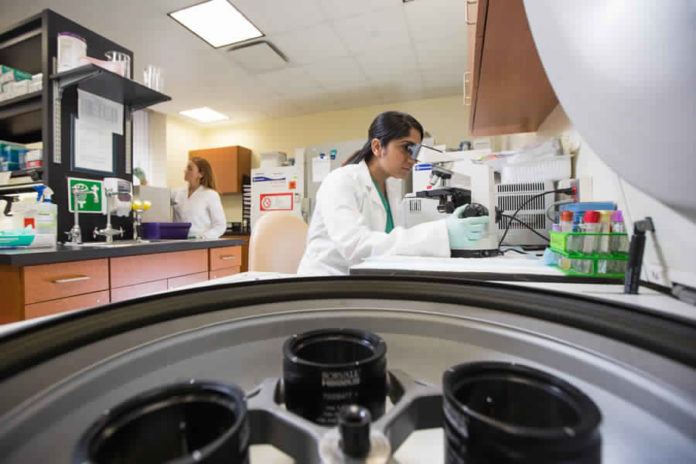Large molecule bioanalysis is a branch of the analytical category where a large molecule therapeutic is analyzed through the use of a biological matrix. Commonly, the biological matrix being used for such analysis is either plasma or serum. This technique is useful in the analysis of large molecule drug products such as proteins, peptides, antibody-drug conjugates, and monoclonal antibodies.
Table of Contents
Bioanalysis –
Bioanalysis or analysis of biological molecules is a sub-discipline of analytical chemistry for quantification of the drugs and their metabolites in a wide array of biological systems. Such techniques are very widely used throughout the process of the drug development process for providing support to the drug discovery processes. They are also used for the analysis of drugs used in different illicit purposes, forensic analysis, monitoring environmental analysis, and anti-dope testing in sports.
Commonly employed methods for bioanalysis of these large biomolecules are as follows –
Pharmacokinetic large molecule bioanalysis –
The pharmacokinetic large molecule bioanalysis is usually the preferred bioanalytical method for both clinical and pre-clinical drug development stages. Pre-clinical pharmacokinetic studies involve dosing animals (pre-clinical) or patients (clinical) with the drug candidate under analysis and drawing their blood samples at frequent intervals. Now, the serum or plasma is isolated from the blood sample and sent to the lab for analytical testing.
Pharmacodynamic studies –
These studies analyze the effect that a particular drug candidate produces on the patient under observance. Here, a drug is tested to determine both its biochemical and physiological effects. Such analysis provides a better insight into the mechanism of action of a drug product, and how it behaves at the biochemical level.
Immunogenicity studies –
Immunogenicity testing is usually employed in the analysis of the large molecule bioanalysis rather than small molecule bioanalysis. This is because there is a higher chance for the large molecular therapeutics to produce a more robust immune reaction than the small molecules. Regulatory authorities typically demand these immunogenic bioanalyses to be performed during the clinical trials for better characterization of the immune response against the therapeutic window of the patient population. Such studies are labelled either as ADA assays or Anti-drug antibody binding assays.
Toxicokinetic studies –
Pre-clinical toxicokinetic studies display similarities with pharmacokinetic studies; yet involves a wide array of differences. Much higher doses are required to perform these toxicokinetic studies, thereby allowing the toxic effects to be more of apparent origin. For obvious reasons, toxicokinetic studies are usually accomplished in animals rather than conducting them in humans directly.
Method development for large molecule bioanalysis –
The method development process for the establishment of large molecule bioanalysis can be broken down with the help of a logical progression. Practically, the large molecule bioanalysis process involves a series of interlinked and iterative steps for finally arriving at the best possible method.
LC-MS applications in bioanalysis –
The implementation of LCMS in the large molecule bioanalysis has always been evolving for achieving a better specificity, sensitivity, convenience, and throughput. LCMS analysis provides broader linear dynamic ranges for quantification and subsequent bioanalysis of the large molecules.






















